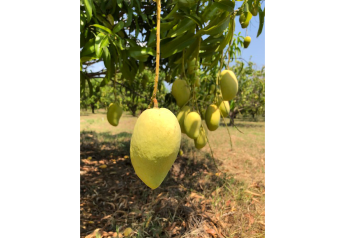Wheat Breeding Advances

Researchers tackle the tough wheat genome
Wheat truly feeds our world. It accounts for 20% of the calories we consume, and 35% of the Earth’s population depends on it for their very survival.
Yet the crop has remained relatively elusive to scientists, partially due to its complexity at the genetic level. The wheat genome has about 17 billion paired DNA bases, which makes it even more complex than the human genome. Because around 80% of the genome contains repetitive sequences, it has been difficult to interpret readouts and determine whether a particular sequence is unique.
However, a recent breakthrough has allowed an international team of scientists to complete a "shotgun sequencing," breaking up the wheat genome into smaller, more workable segments.
Shahryar Kianian, professor of plant sciences at North Dakota State University and one of the collaborators, says the project has been in progress for several years. Generating the necessary information was a fast, relatively inexpensive process, he says—but assembling and arranging this information required quite a bit of brainpower and computer processing.
"Essentially, we put together the world’s largest jigsaw puzzle," he says.
Why go through all the trouble? Researchers hope the study will lead to multiple positive outcomes. For example, the sequencing project greatly multiplied the number of genetic markers for plant breeders to use, Kianian says. They could be used to more effectively breed and adapt wheat to parts of Asia and sub-Saharan Africa to improve drought tolerance, or create varieties that are more resistant to disease.
"Fifteen years ago, we had about a thousand markers," Kianian says. "This breakthrough put us in the millions. Now, if you are targeting UG-99 resistance, for instance, you can transfer genes more easily and more cleanly."
Not there yet. There is still much work to be done. Bikram Gill, distinguished professor of plant pathology and director of the Wheat Genetics Resource Center (WGRC) at Kansas State University, says the next step is to develop a "gold standard sequence" for wheat. Scientists will anchor the complete sequence to a genetic map of agronomic traits important to the wheat industry.
Researchers at WGRC and elsewhere are also studying wheat’s polyploid properties, which could lead to breakthroughs in other food crops such as cabbage and broccoli.
"Polyploidy is both a curse and a blessing," Gill explains. "It provided the evolutionary novelty that made wheat the world’s most important crop, but at the same time it made the genome more complex and a hard nut to crack."
For now, the gene sequencing of wheat has allowed researchers to identify, categorize and record individual genes and gene cluster locations. Gill considers it a rough map, but loaded with points of interest for future studies. Like his collaborators, Gill says his focus is still on the true prize—the gold standard sequencing.
"With funding from the USDA and the National Science Foundation, center scientists have made sequenceready physical maps," he says. "But lack of funding is hurting the U.S. effort for gold standard sequencing of the wheat genome."
Top Wheat Producing States in 2011
(millions of bushels)
1 Kansas 276.5
2 North Dakota 199.9
3 Montana 175.0
4 Washington 167.9
5 Idaho 116.0
6 South Dakota 104.8
7 Colorado 81.8
8 Oregon 74.5
9 Minnesota 70.5
10 Oklahoma 70.4
You can e-mail Ben Potter at bpotter@farmjournal.com.







